The Zika virus is the new health scare. But beyond that, what is it? Well the AFP put together this explainer graphic.

Credit for the piece goes to John Saeki.
Mother Jones had a lengthy but fascinating piece on urban parking. (I mention the lengthy bit only lest you think it a quick lunch read.) While the design uses a few factettes as sidebars to the main body copy:

The more interesting piece is the illustrative comparison of a 1.5 vehicle parking space to the size of a 2-bedroom flat. This is the main and really only graphic of the whole piece. However it does a great job comparing the sizes required for humans and for vehicles. We use a lot of space for vehicles.
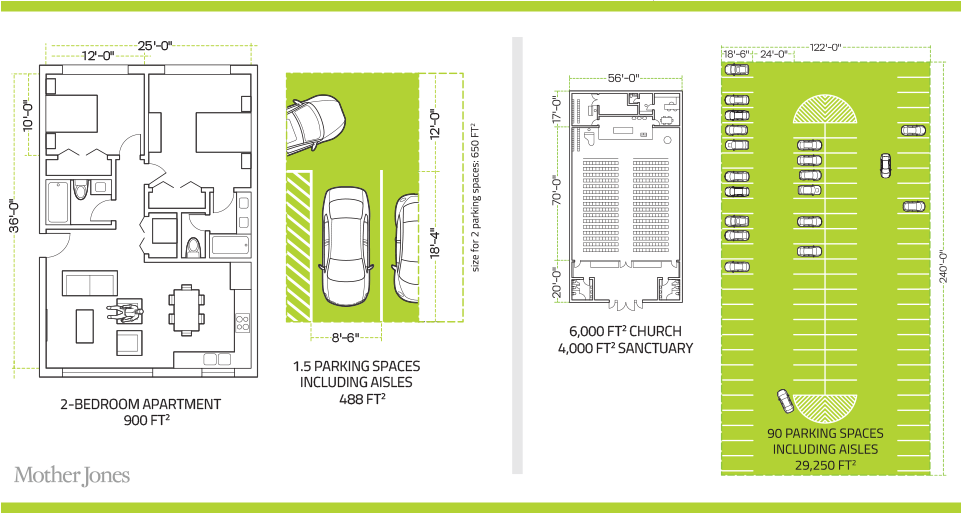
Not that I have any intention of getting rid of my car.
Credit for the piece goes to Chris Philpot.
I’m sure the word you were looking for was symbolism. (Points if you get the reference.) Apologies for yesterday, I was a bit under the weather.
Today we deviate from graphs and things and go to another area of conveying information: symbology. I mean iconography. The BBC featured an article about possible new symbols for maps ahead of the 2020 Olympics when, presumably, lots of foreigners will need maps to get around Tokyo. And so you can imagine that the agency behind the proposed ideas has received a backlash about changing customary Japanese symbols for foreigners.
I combined each of the examples from the article. Each row includes the proposed Japanese version and the foreigner version. See if you can identify them without the word. You can imagine, however, that the focus of the article was upon that first row. The answers are after the credits.
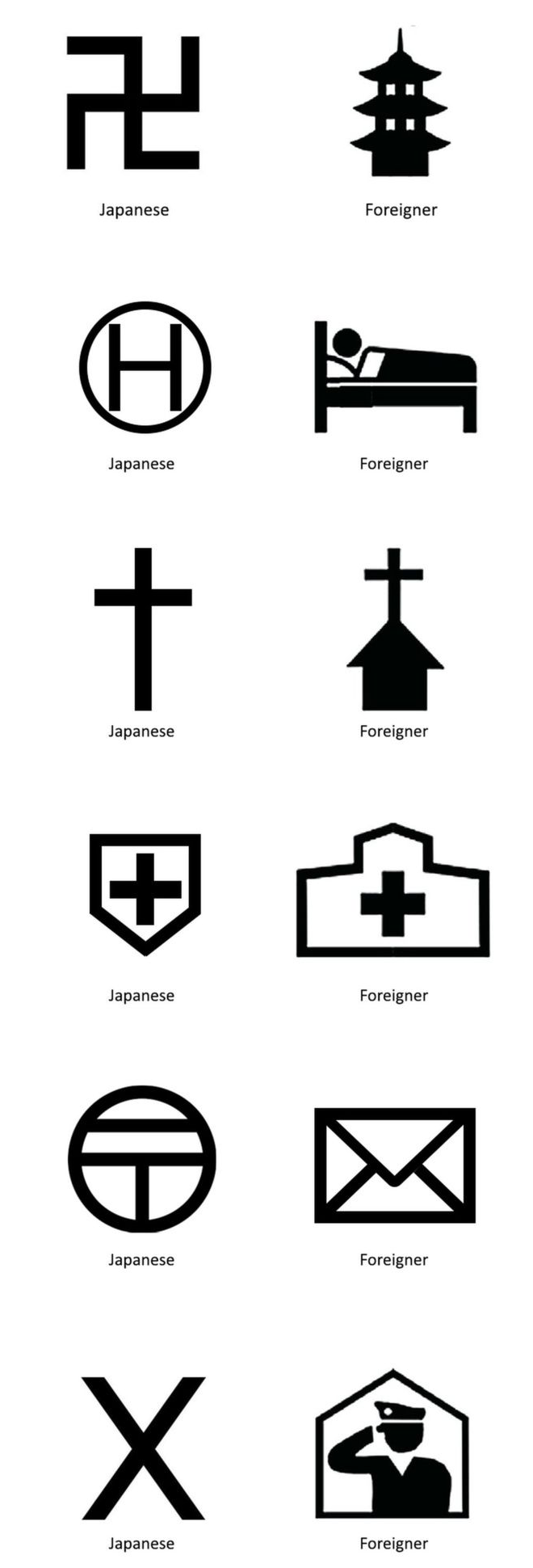
Credit for the original work goes to the Geospatial Information Authority of Japan.
The answers, top to bottom: temple, hotel, church, hospital, post office, police station.
When I was in high school I began to listen to music. To find music. To find artists. A guy who owned and operated the store next to where I worked recommended David Bowie, that guy whose songs I had heard on Philly’s classic rock radio stations. Back in those days we still had record stores—not that I knew what a record was—and I found a few used CDs—now that kids today would know what a CD is. Over that summer, I picked up a lot of new music. But what struck me about this David Bowie guy is that Space Oddity, Tonight, and Heathen all sounded so different from each other. He was a great one. And while I’m certain there will be some graphic in the future about his timeline—how can there not—today I am going to follow up once more on the North Korean nuclear test after coming across this graphic from Reuters.
You will recall how last week I looked at a New York Times post that explained the differences between a few different types of nuclear weapons. Well, here Reuters illustrates those differences.

Credit for the piece goes to S. Scarr.
Admittedly today’s piece fails to deliver on the data visualisation and information design spectrum. But I found it hilarious and apropos to this week’s content.
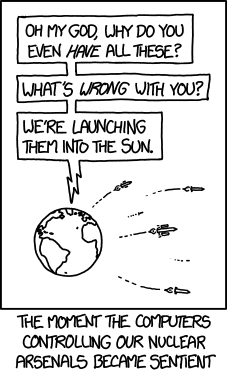
Credit for the piece goes to Randall Munroe.
Yesterday we looked at the sites and timeline of nuclear weapons tests. Today, however, as we learn more about North Korea’s hydrogen bomb test, some are wondering whether it really was a hydrogen bomb or something else. After all, there are different ways to build the bomb. Some suggest North Korea tested an atom bomb on steroids, more properly called boosted fission. Anyway, the New York Times does a nice job explaining the differences between the atom bomb, the hydrogen bomb, and how we can infer what North Korea tested from the calculated size of the blast.
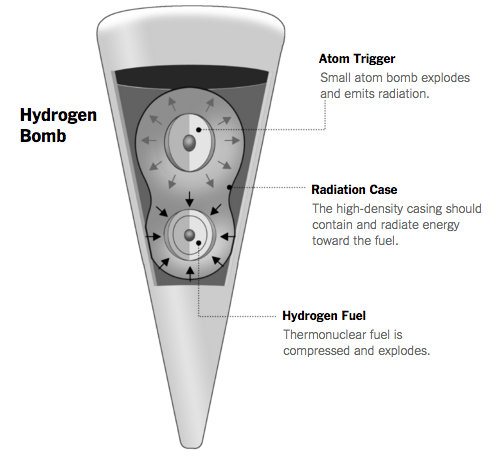
Credit for the piece goes to Josh Keller, Ford Fessenden, and Tim Wallace.
So Paris happened. But the question is how exactly? Thankfully the New York Times are on it as they try to explain Friday night.
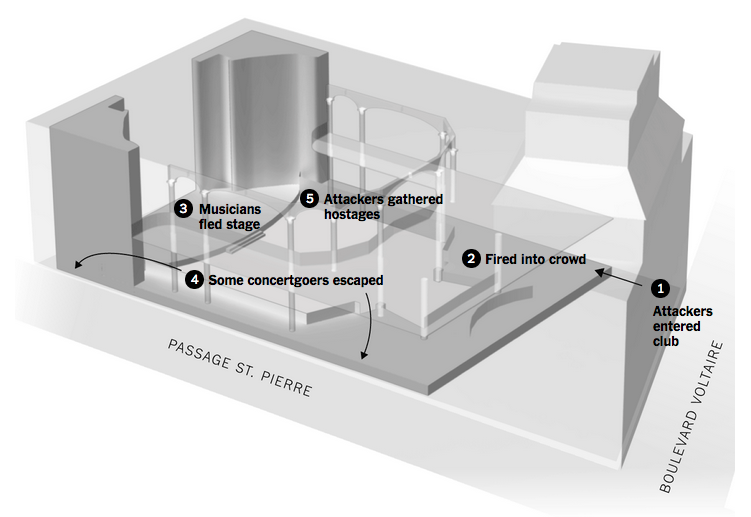
Worth pointing out the list of credits below. Clearly the piece was a team effort.
Credit for the piece goes to Gregor Aisch, Wilson Andrews, Larry Buchanan, Jennifer Daniel, Ford Fessenden, Evan Grothjan, K.K. Rebecca Lai, Haeyoun Park, Yuliya Parshina-Kottas, Graham Roberts, Julie Shaver, Patrick J. Smith, Tim Wallace, Derek Watkins, Jeremy White, and Karen Yourish.
Today the US sent a guided missile destroyer through what China claims—but few recognise as—its sovereign territory, twelve nautical miles off the coast of semi-artificial islands. This piece from Quartz illustrates just some of the overlapping claims of the Spratley Islands. In the end, nothing happened to the destroyer as China did not counter it with ships or aircraft.
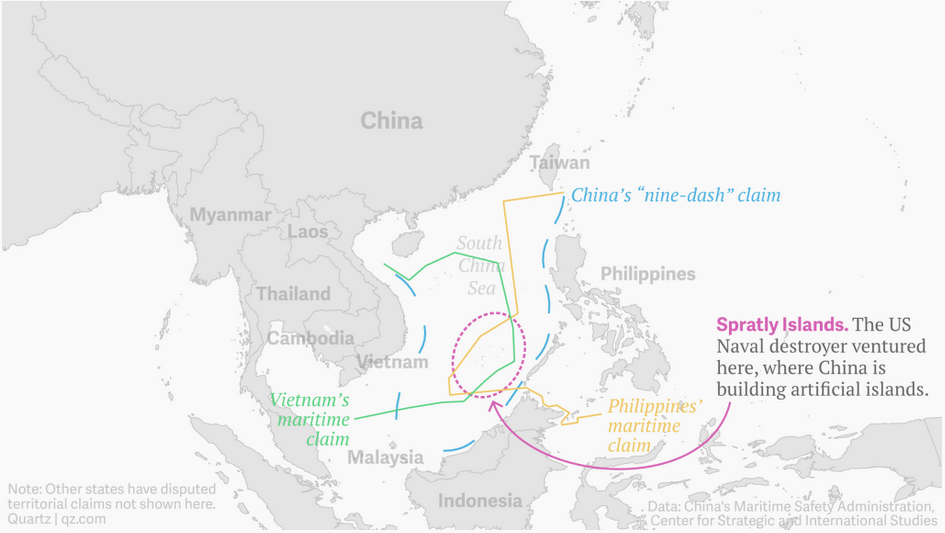
Credit for the piece goes to the Quartz graphics team.
Last month we looked at the Washington Post’s coverage of the second Republican Debate. For those unaware, the first Democratic Debate was held last night. And so it is only fair for us to look at the Post’s coverage of that event.

Credit for the piece goes to Samuel Granados, Richard Johnson, Denise Lu, Ted Mellnik, and Kevin Schaul.